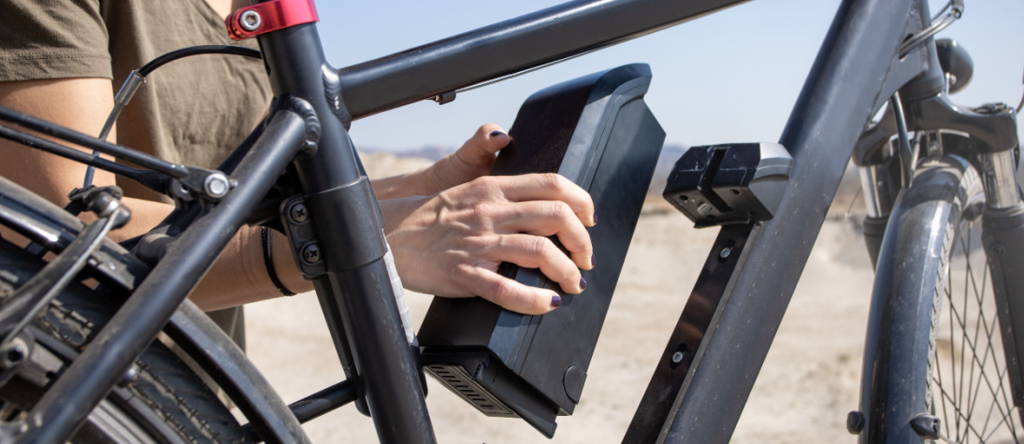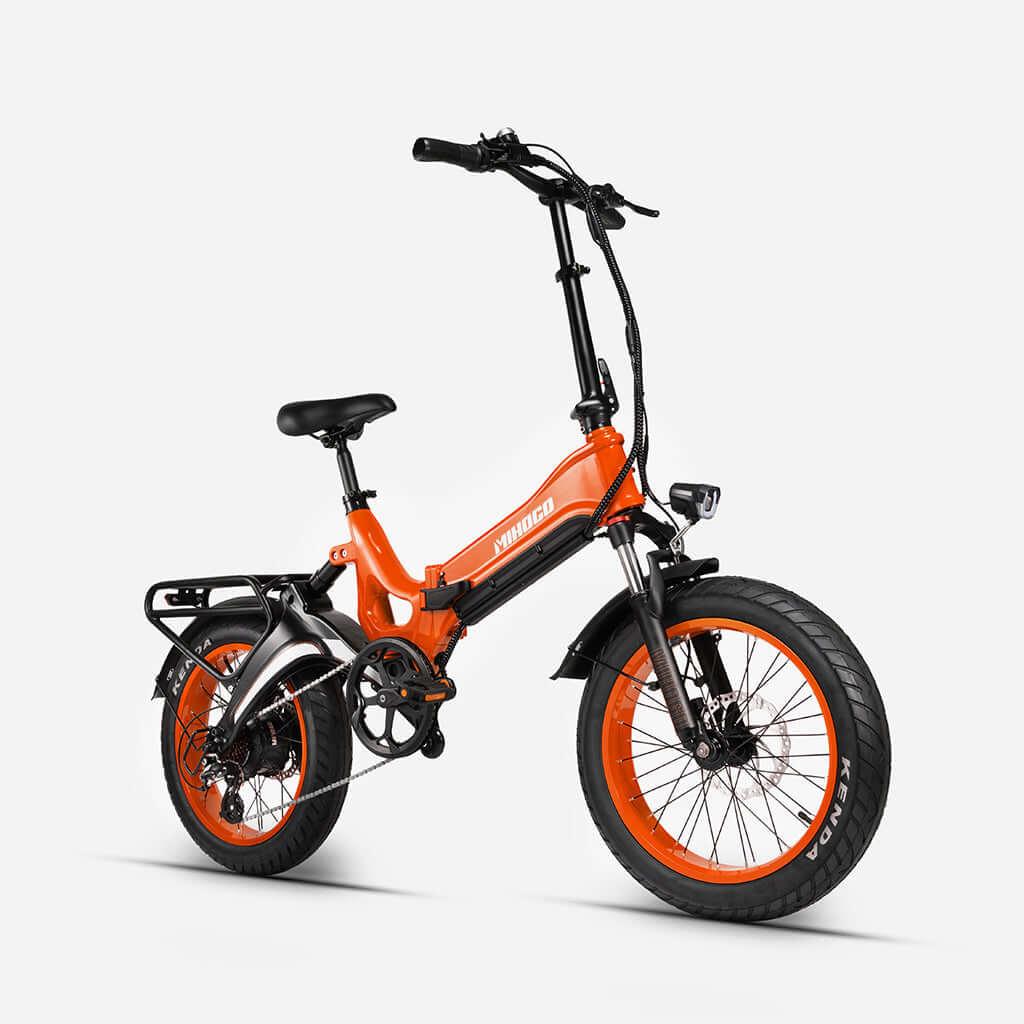What Size Battery is Best for Electric Bike? Your e-bike’s performance depends heavily on choosing the right battery.
For city commuters, a 36V/10Ah battery hits the sweet spot – it’s light enough for easy handling while providing 20-30 miles per charge. If you’re into longer rides or tackling hills, consider a 48V/15Ah battery for extra power and range. Think about your typical rides – flat city streets work fine with a 36V system, but hilly terrain needs that extra 48V punch.
Just remember: bigger isn’t always better. The right size matches your riding style, terrain, and distance needs without weighing you down or costing more than necessary. Your perfect battery balances power, weight, and range for your specific riding habits.
Table of Contents
E-bike Batteries
Choosing the right battery is key to the e-bike experience. It determines range, power, and ride quality. This section explores battery basics for electric bikes.
The Role Of The Battery In E-bikes
Batteries act as the heart of an e-bike, powering the motor for smooth rides. They influence how far and fast you can go. A good battery means longer rides with less charge time.
Types Of E-bike Batteries
- Lithium-ion: Popular for their balance of weight, capacity, and life span.
- Lead-acid: More affordable but heavier and less efficient.
- Nickel-cadmium: Durable but suffer from memory effect.

Credit: upway.co
Measuring Battery Capacity
Choosing the right battery is key for electric bikes. Let’s explore how to measure battery capacity. This guide makes it easy to understand.
Understanding Watt-hours (wh)
Watt-hours (Wh) tell us a battery’s energy. Think of it as the fuel tank size. A bigger Wh means more power and longer rides. It’s simple:
- Voltage (V) times Amp hours (Ah) equals Watt-hours (Wh).
- A 36V battery with 10Ah has 360Wh.
This info helps pick the right battery size.
Amp Hours (ah) Explained
Amp hours (Ah) show battery capacity. More Ah, longer battery life. It’s like a backpack size. Bigger backpack, more stuff you can carry.
| Battery Voltage (V) | Amp Hours (Ah) | Watt Hours (Wh) |
|---|---|---|
| 24V | 10Ah | 240Wh |
| 36V | 10Ah | 360Wh |
| 48V | 10Ah | 480Wh |
Choose a battery that fits your ride needs.
Factors Influencing Battery Size Selection
Choosing the right battery size for an electric bike is crucial. It affects ride quality and range. Many factors play a part in this choice. Here are key considerations for selecting the perfect battery size.
Rider’s Needs And Preferences
Every rider is unique. Some want long rides without recharging. Others prefer light batteries for easy handling. Think about your riding goals. More range means a bigger battery. But, a bigger battery adds weight. Balance is key.
Terrain And Bike Usage
Think about where you’ll ride. Hills and rough terrain need more power. This means a larger battery. Frequent riders should also consider battery life. More use means more charge cycles. A bigger battery can handle this better.
Comparing Battery Sizes
Choosing the right battery size for an electric bike is crucial. It affects performance, range, and enjoyment. This guide compares battery sizes to help riders make informed choices.
Small Vs. Large Batteries
Small batteries are lighter and make the bike easier to handle. They charge faster but offer shorter rides. Large batteries weigh more but provide longer range. Riders must balance weight and range based on their needs.
Performance And Range Considerations
Battery size directly impacts performance and range. A larger battery delivers more miles per charge, ideal for long trips. A smaller one suits short, daily commutes. Riders should consider their typical ride distance when choosing a battery size.
| Battery Size | Weight | Range | Charge Time |
|---|---|---|---|
| Small | Light | Less | Shorter |
| Large | Heavy | More | Longer |
- Small batteries: Best for light use and easy transport.
- Large batteries: Best for extended rides without frequent charging.
Battery Size And E-bike Weight
Choosing the right battery size for an electric bike is key. It affects both the bike’s weight and how it rides. A heavy battery can make the bike hard to lift. Yet, it can go farther on a single charge. Let’s explore how battery size impacts e-bike weight.
Impact On Handling And Portability
A big battery adds weight. This can make the e-bike harder to handle. Riding feels different. Turning and stopping take more effort. Carrying the bike up stairs or lifting it becomes tough. Think about where you’ll use the bike. City riders, take note.
Balancing Weight And Capacity
Finding a balance is crucial. A light battery is easy to carry but may not last long. A heavy battery goes further but is harder to lift. Aim for a middle ground. Consider your needs. Short trips or long adventures? Choose based on that.
Charging Time And Battery Size
When choosing an electric bike, battery size and charging time are key factors. A larger battery often means longer rides but also requires more time to charge. Finding the right balance is crucial for an enjoyable e-bike experience.
Charger Compatibility
Selecting the right charger impacts charging time. Not all chargers fit every battery. Ensure your charger and battery are a match. This prevents long waits and extends battery life.
- Check voltage and amperage: Your e-bike battery specs should guide you.
- Manufacturer’s charger: Using the provided charger is often best.
- Fast chargers: Some e-bikes support them for quicker charging.
Planning For Longer Rides
For extended trips, a bigger battery is useful. But remember, larger batteries take more time to charge. Plan your rides and charging stops accordingly.
- Estimate your range: Know how far your e-bike can go on a charge.
- Map out charging spots: Look for places to charge on your route.
- Carry a spare: A second battery can double your travel distance.
Cost Considerations
Choosing the right battery for an electric bike involves many factors. Cost considerations are crucial. This section explores the impact of battery size on price and long-term savings.
Price Differences
Different sizes of batteries come with different price tags. A larger battery often costs more. Yet, it offers more power and range. Let’s break down the price by battery size.
| Battery Size | Price Range |
|---|---|
| Small (under 10Ah) | $100 – $300 |
| Medium (10Ah – 15Ah) | $300 – $500 |
| Large (over 15Ah) | $500 – $700 |
Bigger batteries cost more. But they last longer on a ride.
Long-term Savings
Think about long-term savings too. A bigger battery means fewer charges. This saves money over time.
- Less wear on the battery with fewer charges.
- Longer life span.
- Saves electricity.
Choosing a bigger battery can be a smart move. It costs more upfront. But it saves money in the long run.

Credit: mihogo.com
Maintenance And Battery Lifespan
Selecting the right battery size for an electric bike is crucial. It affects not only the range but also the overall longevity of the power source. Regular maintenance and understanding the factors that influence battery lifespan are key for optimal performance.
Caring For Your E-bike Battery
Proper care keeps batteries running smoothly. Follow these steps:
- Charge regularly to avoid full depletion.
- Store in a cool, dry place.
- Avoid extreme temperatures.
- Use manufacturer-recommended chargers.
Maximizing Battery Life
To extend battery life:
- Charge after every ride.
- Maintain moderate speeds.
- Balance the battery regularly.
- Keep it clean and dust-free.
Making The Right Choice
Choosing the right battery for an electric bike is crucial. It affects the bike’s range, weight, and overall performance. Riders must consider their specific needs to find the perfect fit. The best battery ensures a smooth ride every time.
Assessing Personal Needs
Think about your daily routes. Are they long, short, hilly, or flat? Long routes need batteries with more capacity. This means more power for longer rides. For hilly areas, a strong battery is key. It helps the bike climb without losing speed.
Consider the bike’s weight too. A heavy battery makes the bike harder to handle. Lighter batteries are easier to carry but may offer less range. Balance is important here.
Your budget matters as well. High-quality batteries cost more. Yet, they last longer and perform better. Choose a battery that fits your budget and meets your riding needs.
Expert Recommendations
Experts suggest lithium-ion batteries. They are light and efficient. They also hold charges well and have long life spans. For most riders, these batteries are the top choice.
Look for a battery with a high energy density. This means more power in less space. Your bike stays light but travels far on a single charge.
Check the warranty too. Good batteries come with long warranties. This shows the maker trusts the product and stands by its quality.
Finally, safety is key. Pick batteries with built-in protection. This includes overcharge and temperature control. Safe batteries last longer and keep you secure on your rides.

Credit: haoqiebike.com
Future Of E-bike Batteries
The future shines bright for e-bike batteries. Riders seek longer rides with less charge time. Batteries are key to this quest. Let’s explore how they’re evolving.
Technological Advancements
Advances in technology bring us better batteries. They are lighter, stronger, and last longer. Here’s what’s new:
- Solid-state technology – Safer and more energy-dense.
- Fast charging – Get back on the road quicker.
- Integration with bikes – Batteries fit seamlessly into designs.
Environmental Impact
Today’s batteries are greener. They use eco-friendly materials and last longer. This means less waste. Here’s the impact:
| Feature | Impact |
|---|---|
| Recyclable Materials | Reduces landfill waste. |
| Longer Life Cycles | Decreases frequent replacements. |
| Efficient Manufacturing | Lowers carbon footprint. |
Choosing the right battery size ensures a balanced ride. It also means less strain on the planet. Riders can enjoy the journey, knowing they’re making a positive impact.
Frequently Asked Questions
What Factors Determine The Best Battery Size For E-bikes?
The best battery size for an electric bike depends on the rider’s weight, the type of terrain, and the desired range. Consider your daily commute distance and any inclines you’ll face.
How Does Battery Size Affect E-bike Performance?
A larger battery size usually means a longer range and potentially more power, enhancing your e-bike’s performance. However, it also makes the bike heavier and may increase charging time.
Can I Upgrade My E-bike Battery To A Larger Size?
Upgrading is possible but check compatibility with your e-bike model first. Consider the physical fit, voltage, and whether your controller can handle the increased power.
What’s The Difference Between Battery Types For Electric Bikes?
Electric bikes primarily use lithium-ion batteries, known for their light weight and efficiency. Other types, like lead-acid, are heavier and offer less range but at a lower cost.
Conclusion
Choosing the right battery size for your electric bike is crucial. It affects range, weight, and overall riding experience. A larger battery offers more miles per charge, ideal for long rides. A smaller one is lighter and good for short commutes.
Always consider your specific needs. Match them with the right battery capacity. This ensures a ride that’s both enjoyable and efficient. Your e-bike adventure awaits, with the perfect power source to keep you moving.

